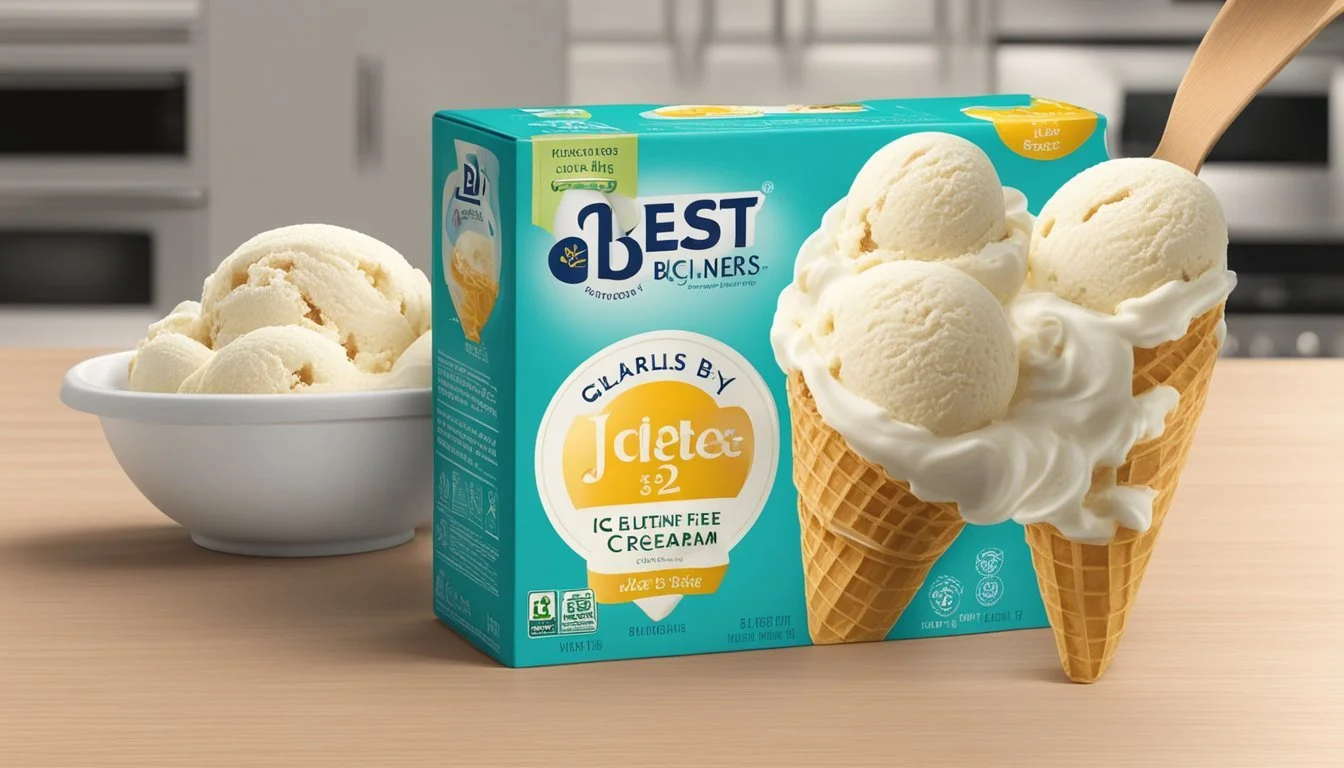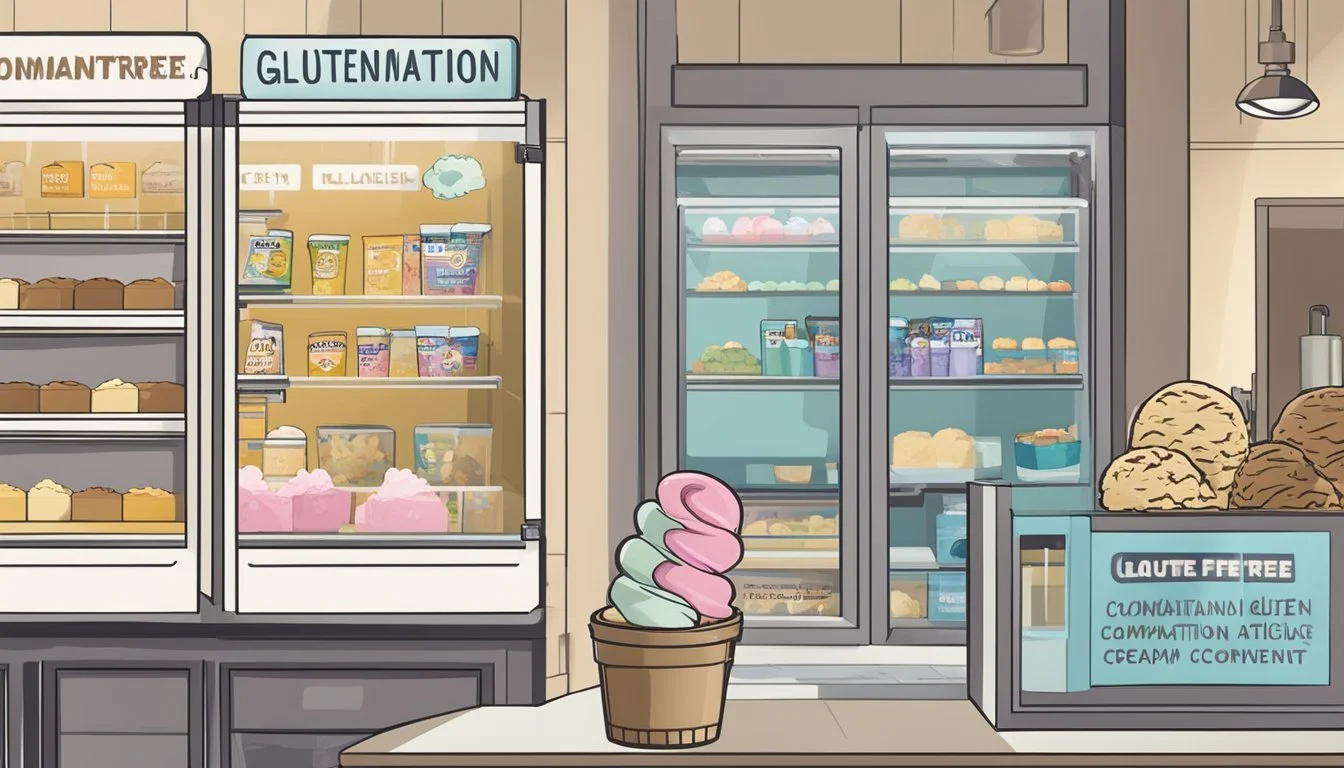How Long Does Gluten-Free Ice Cream Last?
Storage Tips and Shelf Life
Curious about how long your gluten-free ice cream will last in the freezer? When it comes to storing this delicious treat, knowing its longevity can help you enjoy every scoop without worry. Gluten-free ice cream typically lasts for about 2 to 3 months in the freezer when stored properly.
Proper storage involves keeping the ice cream tightly sealed in its original container or an airtight plastic tub to prevent freezer burn. This keeps the texture and flavor intact for as long as possible. Always remember to return the container to the freezer immediately after scooping to maintain its freshness.
It's also essential to check for signs of spoilage, such as changes in texture, off smells, or ice crystals forming on the surface. These indicators suggest that the ice cream might not be safe to consume anymore. Enjoy your gluten-free treat within the recommended timeframe for the best experience.
Understanding Gluten-Free Ice Cream
In exploring gluten-free ice cream, it's crucial to comprehend what "gluten-free" truly means, the ingredients typically involved, and the significance of various certifications and labels that ensure safety for those with gluten sensitivities.
Defining Gluten-Free
Foods labeled "gluten-free" must adhere to strict guidelines to ensure they contain less than 20 parts per million (ppm) of gluten. This threshold is considered safe for most individuals with celiac disease or gluten sensitivity. Gluten is a protein found in wheat, barley, and rye. Consequently, gluten-free products must be free from these grains and any derivatives thereof. This applies to all varieties of ice cream marketed as gluten-free, meaning they do not include any ingredients derived from these sources.
Ingredients Common in Gluten-Free Ice Cream
Gluten-free ice cream primarily uses basic ingredients like dairy, sugar, and flavorings such as vanilla and chocolate. These base ingredients are naturally gluten-free. However, other additives and mix-ins can complicate things. Cookie dough, brownies, and certain starches used as thickeners or stabilizers might contain gluten. Brands producing gluten-free ice cream ensure that no gluten-containing ingredients are used and often source certified gluten-free alternatives for any components that might otherwise contain gluten.
Certifications and Labels
Trustworthy gluten-free ice cream brands often carry certifications and labels that signify compliance with gluten-free standards. The "Certified Gluten-Free" label by organizations like the Gluten-Free Certification Organization (GFCO) guarantees rigorous testing and adherence to safety standards. These certifications help consumers confidently choose safe products. Detailed ingredient labels also assist in identifying potential sources of gluten. For those with celiac disease, these labels provide a reliable means to avoid adverse reactions and ensure their ice cream is safe for consumption.
Overall, understanding gluten-free ice cream involves recognizing what qualifies as gluten-free, the importance of scrutinizing ingredient lists, and the relevance of trusted certifications. This ensures a safe and enjoyable treat for those adhering to a gluten-free diet.
The Shelf Life of Gluten-Free Ice Cream
The shelf life of gluten-free ice cream varies based on several factors, including storage conditions and whether it is store-bought or homemade. Understanding these factors can help consumers ensure their ice cream remains safe and enjoyable.
Factors Affecting Shelf Life
Storage Conditions
Proper storage is crucial for maintaining the quality of gluten-free ice cream. Freezers should be set at 0 degrees Fahrenheit to prevent spoilage. Frequent opening and closing of the freezer can lead to temperature fluctuations, which may cause ice cream to develop ice crystals and lose its creamy texture. Using airtight containers can also help minimize exposure to air.
Manufacturing and Preservatives
Store-bought gluten-free ice cream often contains preservatives that help extend its shelf life. These preservatives inhibit the growth of bacteria and mold, making the ice cream last longer than homemade varieties. However, even with preservatives, store-bought ice cream should be consumed within 2-3 months for optimal quality.
Homemade Gluten-Free Ice Cream
Homemade gluten-free ice cream typically lacks the preservatives found in commercial products. As a result, it has a shorter shelf life, often lasting just 1-2 weeks in the freezer. Homemade ice cream should be stored in airtight containers to retain its flavor and prevent freezer burn.
Health Considerations
For those with celiac disease or gluten sensitivity, ensuring the gluten-free status of ice cream is essential. Any cross-contamination can pose serious health risks. Gluten-free ice cream should be stored separately from gluten-containing products to avoid accidental contamination.
By following these guidelines, consumers can maximize the shelf life of their gluten-free ice cream and ensure it remains safe and delicious.
Storing Gluten-Free Ice Cream
Proper storage of gluten-free ice cream is crucial for maintaining its flavor and texture. Understanding how to store both store-bought and homemade ice cream can help extend its shelf life.
Best Practices for Freezing
To ensure the best quality, store gluten-free ice cream at a consistent temperature of 0°F (-18°C) or lower. Keeping it in the main part of the freezer, rather than the door, helps maintain a stable temperature.
Store-bought ice cream should remain in its original container. For homemade versions, use airtight containers to prevent freezer odors from affecting the taste. Label containers with the date they were made to keep track of freshness.
Signs of Spoilage
Several indicators signify spoiled ice cream. Ice crystals forming on the surface indicate moisture has evaporated and the ice cream has started to deteriorate.
Changes in texture, such as excessive hardness or a gritty feel, also suggest spoilage. Unpleasant sour or off flavors are another sign that the ice cream is no longer good to eat.
Preventing Freezer Burn
Freezer burn occurs when ice cream is exposed to air, leading to a dry, icy texture and altered flavor. To prevent this, ensure the container is tightly sealed after every use.
For additional protection, place a piece of plastic wrap or wax paper directly on the ice cream's surface before sealing the lid. This extra layer helps minimize air contact and keeps the ice cream smoother for longer.
Popular Gluten-Free Ice Cream Options
A range of gluten-free ice cream options, from commercial brands to artisanal and homemade varieties, provide delicious choices for those avoiding gluten. Non-dairy and vegan alternatives also offer tasty solutions for dietary restrictions.
Commercial Brands
Commercially available gluten-free ice creams include popular names like Ben & Jerry's, Breyers, Häagen-Dazs, Halo Top, and So Delicious. These brands often highlight gluten-free options such as vanilla, chocolate, strawberry, and mint chocolate chip.
Ben & Jerry's offers favorites like Cherry Garcia and Chunky Monkey. Breyers provides traditional flavors including natural vanilla and mint chocolate chip. Halo Top is known for low-calorie options such as birthday cake and chocolate peanut butter swirl. These brands ensure transparency and safety for gluten-sensitive consumers.
Artisanal and Homemade Varieties
Artisanal and homemade gluten-free ice creams are crafted to accommodate personal tastes and dietary needs. Small batch producers and individuals create unique flavors that might not be available in commercial brands.
Local ice cream shops often make gluten-free flavors like rocky road and cookie dough, ensuring that ingredients are carefully selected. For those making ice cream at home, recipes can include fresh fruits or gluten-free cookies. Gelato and sorbet, traditionally made without gluten, also offer rich and refreshing options for homemade creations.
Non-Dairy and Vegan Alternatives
The demand for non-dairy and vegan gluten-free ice cream has led to the rise of brands like So Delicious, Cosmic Bliss, and Arctic Zero. These options cater to those avoiding both gluten and dairy.
Cosmic Bliss (formerly Coconut Bliss) provides dairy-free, certified gluten-free varieties in enticing flavors. So Delicious offers cashew milk and coconut milk ice creams in flavors like chocolate and vanilla bean. Arctic Zero features low-calorie, non-dairy delights that are perfect for those seeking health-conscious choices. These alternatives ensure everyone can enjoy ice cream without compromising their dietary restrictions.
Health Considerations and Dietary Restrictions
Health considerations and specific dietary restrictions play a crucial role when choosing gluten-free ice cream. It is important to address gluten sensitivity, manage sugar intake, and explore label certifications.
Understanding Gluten Sensitivity and Celiac Disease
Individuals with gluten sensitivity or celiac disease must avoid even trace amounts of gluten to prevent adverse reactions. Gluten-free ice cream ensures safety for these individuals.
Checking the label for "gluten-free" certification helps, as cross-contamination can occur during manufacturing. Recognizing symptoms of gluten sensitivity, such as bloating and abdominal pain, can guide proper dietary choices.
Products with simple, natural ingredients and no added gluten-containing items, like cookie dough, are generally safer.
Navigating Sugar and Additives in Gluten-Free Ice Cream
Sugar content and additives in gluten-free ice cream must also be considered. High sugar levels can lead to health issues like diabetes and obesity. Analyzing nutritional information on the packaging is essential.
Artificial sweeteners and additives might be present to enhance taste but can cause digestive discomfort for some. Opting for ice cream with natural sweeteners and fewer additives can be healthier.
Brands that use organic ingredients may also offer better options in terms of health benefits.
Kosher, Non-GMO, and Organic Options
Many consumers look for kosher, non-GMO, and organic certifications. Kosher-certified ice cream meets dietary laws for those observing kosher practices.
Non-GMO labels indicate that the ice cream doesn't contain genetically modified organisms, appealing to those avoiding GMOs for health or environmental reasons.
Organic options often guarantee minimal use of synthetic additives and adherence to organic farming practices. These products may have higher nutritional value and fewer harmful substances.
In conclusion, careful examination of ingredient lists, certifications, and labels allows individuals to make informed choices about gluten-free ice cream that align with their health needs and dietary restrictions.
Cross-Contamination Concerns
When it comes to gluten-free ice cream, managing cross-contamination is essential to ensure it remains safe for consumption. This involves understanding risks during manufacturing, knowing how to purchase effectively, and implementing strategies to maintain gluten-free integrity at home.
Manufacturing Processes and Risks
Gluten-free ice cream can be at risk of cross-contamination during manufacturing. Shared equipment, such as mixers and blenders, may introduce gluten particles. Even facilities dedicated to gluten-free products need to adhere to strict protocols.
Manufacturers often test samples to ensure gluten levels remain below 20 mg/kg, the FDA threshold for gluten-free labeling. However, ice creams with added ingredients like cookies or cookie dough pose a higher risk.
Consumers should look for certifications or manufacturing disclosures to verify that proper steps are taken to prevent contamination.
How to Ensure Gluten-Free Integrity when Buying
When purchasing gluten-free ice cream, it's crucial to scrutinize labeling. Products labeled "Certified Gluten-Free" provide added assurance of rigorous testing and protocols. Details about the manufacturing process can often be found on the product's website or packaging.
Store-bought ice cream from dedicated gluten-free brands tends to be safer. Checking customer reviews and consulting resources like the Gluten-Free Certification Organization can be helpful.
Avoid products with added mix-ins unless clearly labeled gluten-free. Even brands with a good track record should be double-checked for recent changes in manufacturing processes.
Tips for Avoiding Cross-Contamination at Home
Proper storage and handling can prevent cross-contamination at home. Store gluten-free ice cream in a separate area from gluten-containing products.
Use dedicated scoops and clean utensils to avoid introducing gluten particles. Washing hands and cleaning surfaces before handling is critical.
Maintaining gluten-free zones in the kitchen, such as separate drawers and shelves, can also help. Home storage should include airtight containers to reduce exposure to gluten particles in the environment.
By following these practices, the integrity of gluten-free ice cream can be preserved, ensuring it remains safe for those with gluten sensitivities.
Creative Ways to Enjoy Gluten-Free Ice Cream
Gluten-free ice cream can be enjoyed in numerous exciting ways. Here's a selection of creative serving suggestions and unique mix-ins to elevate your ice cream experience.
Recipes and Serving Suggestions
Sundaes: Build a classic sundae using gluten-free ice cream. Top with whipped cream, chocolate sauce, and nuts. Fruits like strawberries or bananas add freshness and vibrant colors.
Banana Split: Slice a banana lengthwise and place scoops of cookies and cream or salted caramel ice cream in between. Top with whipped cream, cherries, and nuts for a satisfying dessert.
Ice Cream Cones: Use gluten-free cones for a traditional treat. Add a scoop of homemade vanilla or chocolate ice cream. For an extra crunch, roll the ice cream in crushed gluten-free cookies.
Ice Cream Sandwiches: Make sandwiches with gluten-free cookies. Spread a generous serving of cookies and cream ice cream between two cookies for a delightful treat.
Unique Flavor Combinations and Mix-Ins
Salted Caramel with Pretzel Pieces: This combines the sweet and salty flavors perfectly. The crunch of gluten-free pretzel pieces enhances the smoothness of the caramel.
Mint Chocolate Chip and Brownie Chunks: Add gluten-free brownie chunks to a mint chocolate chip base. The rich chocolate pairs well with the refreshing mint flavor.
Fruit Mix-Ins: Enhance ice cream by folding in chunks of fresh fruit. Strawberries, mango, or blueberries add natural sweetness and color, perfect for a summer treat.
Nuts and Seeds: Sprinkle almonds, pecans, or chia seeds on top of your favorite flavors. These add both texture and nutritional value.
Experiment with these ideas to create delightful variations and enjoy your gluten-free ice cream in new and exciting ways.








